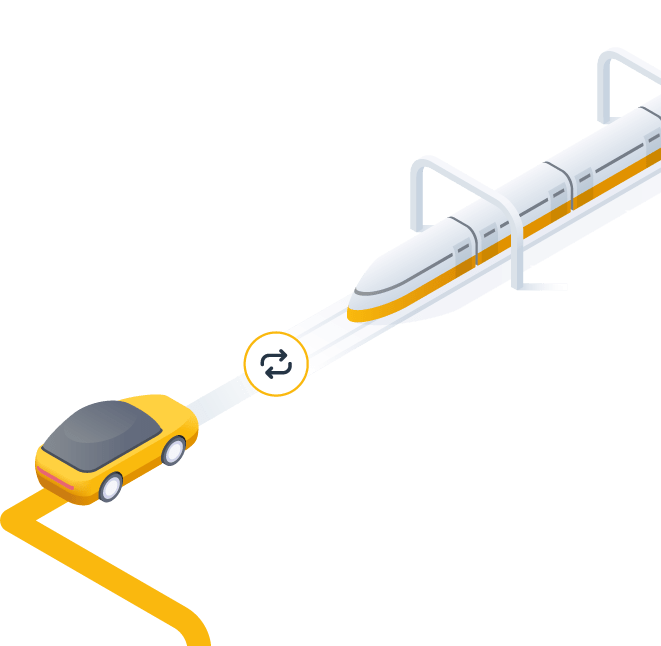L
L
In general, it’s a heated discussion – how to motivate residents to leave their cars at home?
And we all know there’s no quick, one-size-fits-all solution. We have to start somewhere, though – ideally with a single focus.

So what transportation needs do we have in cities?
Let’s consider three of the most common urban transportation needs:
- morning commute into the city,
- trips within the city during the workday, and
- evening commute back home.
I am simplifying a bit by not considering many variances of each of those use cases, such as shuttling kids to and from school, making trips for your evening plans or doing weekend travels.
Which of these needs spark the decision to commute in your private car? In other words, why?
Analyzing two aspects of these common use cases – predictability and flexibility – we come up with a better understanding.
Naturally, daily trips around the city are least predictable since every day is so different. And when we have a meeting scheduled at a specific time, flexibility is the last thing we can work with. Morning commutes are the most predictable of these use cases – we just love to have our morning anchored. But they’re also somewhat inflexible for most.
Analyzing two aspects of these common use cases - predictability and flexibility - we come up with a better understanding.
And then, there is the evening commute. Sometimes, we like to go for a drink with friends, enjoy a dinner out, or visit a show with our loved ones. But most of the time, we don’t like last-minute surprises and we cherish coming back home right after work. Or after doing some sports or activities which we tend to repeat on a regular basis. At the same time, though, we mostly do not stress out about arriving home 15 minutes earlier or later. A reasonable level of both flexibility and predictability are associated with our evening commute behaviour.
Grow your ride-hailing business with intermodality
Learn how you can:
- Boost search to ride conversion rate
- Increase ride frequency and average revenue per user
- Improve vehicle utilisation and fleet efficiency
Download our free case study to find out how you can grow your ride-hailing business sustainably by providing intermodal service to customers.

And I dare to claim that most urban residents who drive their car to the city centre in the morning keep their car parked throughout the whole day, using other forms of transport to move around the city for their daily transport needs. Traffic and parking issues are just too much for us to experience every time we need to travel for our next meeting. Trips throughout the day are least likely to be the reason for taking our private car into the city centre.
The real culprits.
When asked about why they drive their private cars into the city in the morning, many respondents realize that the main reason is not the morning but rather the evening commute. It’s not that strange when you think about it. We are full of energy in the morning and can get used to a fairly fixed travel rhythm quite easily.

Our evenings are more variable, though. Many times we don’t know when we are going to leave for home. Sometimes we don’t even know where we will end our day and be ready to hit home. But at the same time, we know that the later we go, the bigger discomfort of public transport we’ll need to bear (lower schedule frequency resulting in longer connection waiting times, possibly more transfers, and longer commute overall).
And we’re getting there – the three biggest pain points related to public transport – and dare to I say, the three culprits behind our morning decisions for commuting in our private cars:
- the number of transfers we need to make on our way home,
- waiting times for those transfer connections,
- and lastly, the last-mile walking distance. Not many of us are lucky to have a bus stop right in front of our home.
The effective solution to start with.
Now that we got to the root, let’s get back to our single focus. Eliminating the reasons why people decide for their private cars. Focusing on making their evening commute back home more comfortable – door to door. And building upon that further.
We at Mileus are building technology focused on increasing the comfort of residents’ evening commutes. We believe that if we eliminate public transport pain points – connection waiting times and last-mile walking, guaranteeing a comfortable ride home, combining public transport and taxi for a reasonable price, many residents will make a decision to leave their cars at home in the morning.

For sure, the complex challenge of motivating residents to leave their cars at home will require a mix of different solutions. But I believe this is one of them – and very effective at that. In fact, among all the reasons for residents to drive their cars to the urban centres, fixing the discomfort of evening commute will arguably remove the largest subset of those reasons.
I’ve spent hours having insightful discussions about urban transportation challenges. And I’ll be happy to hear and discuss your thoughts, too! Hit me up at juraj@mileus.com or on LinkedIn.
.
For more blog posts and urban mobility updates, follow Mileus on LinkedIn:









